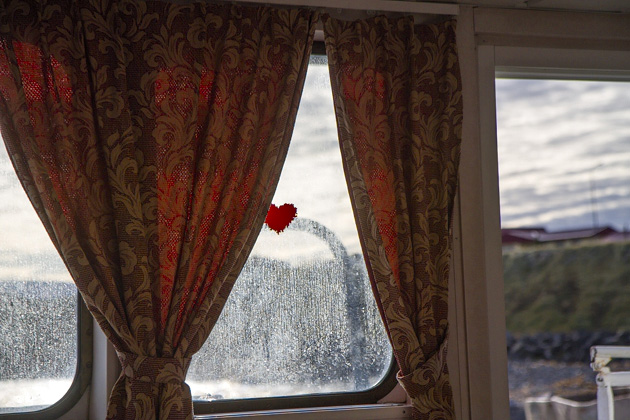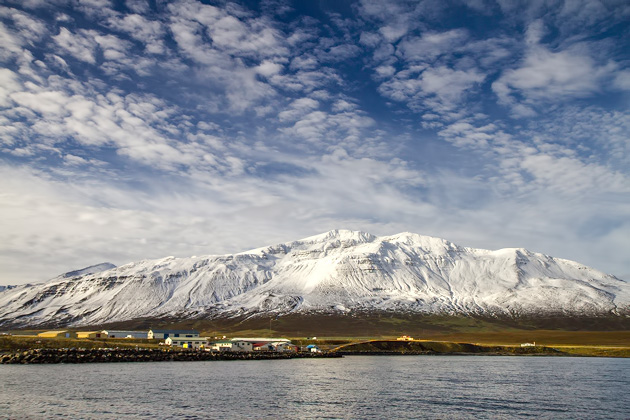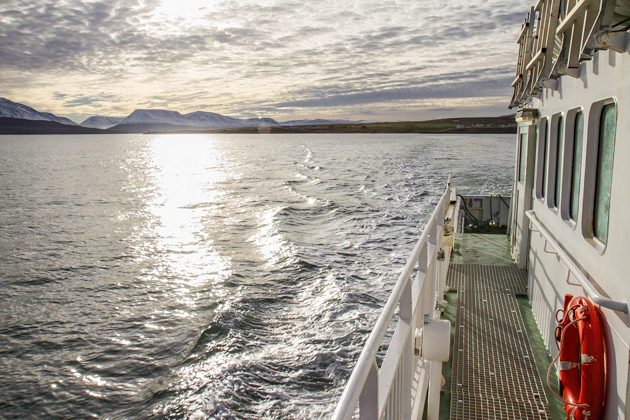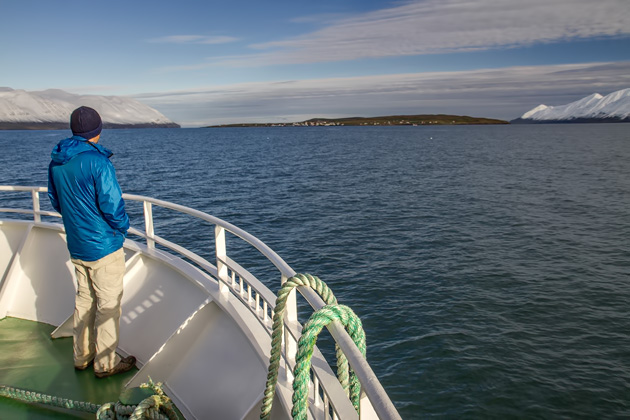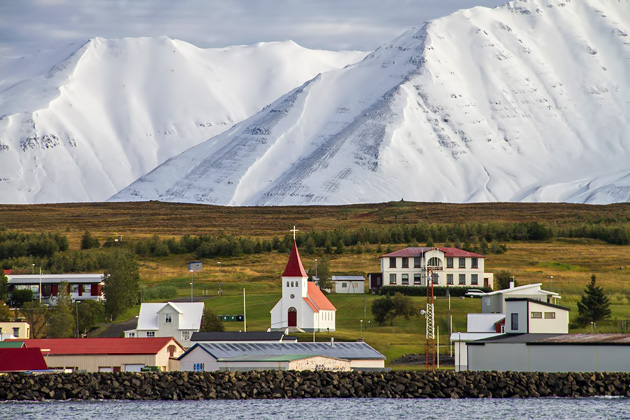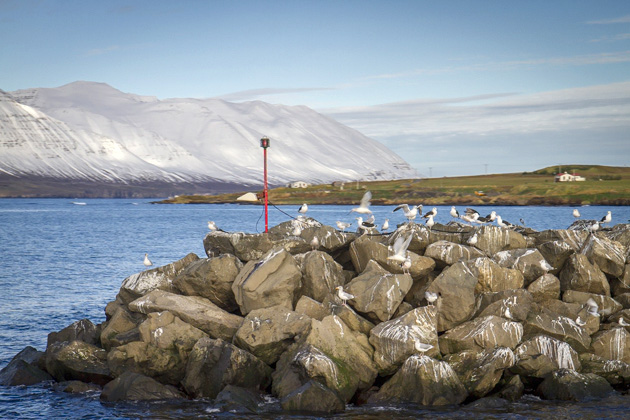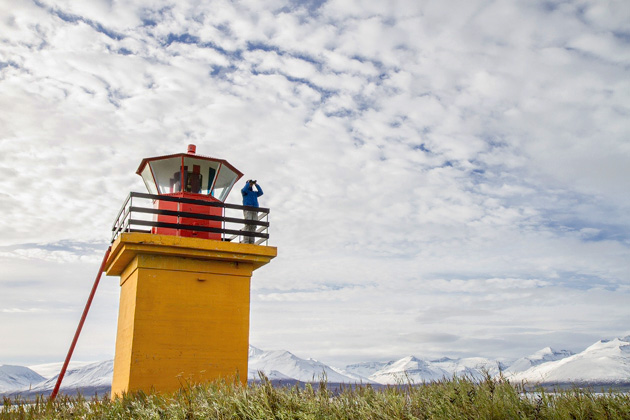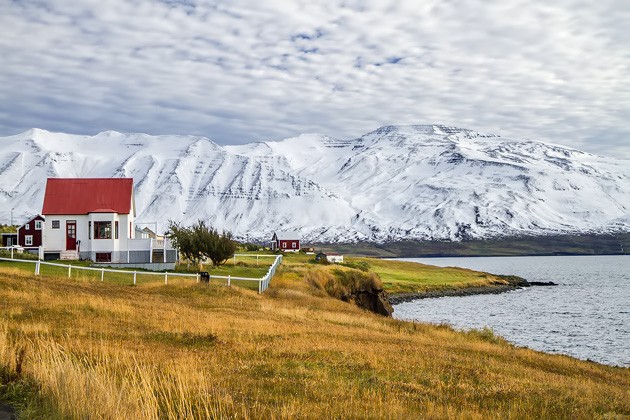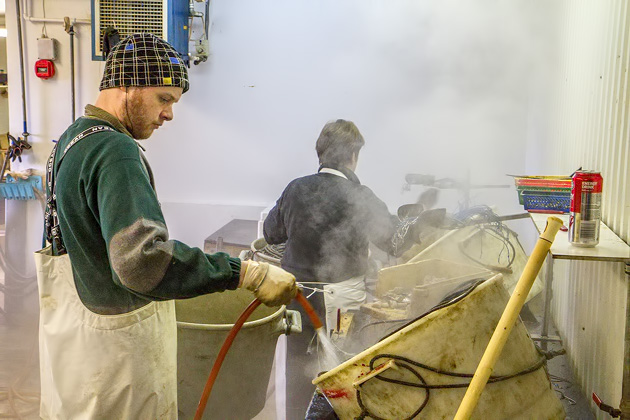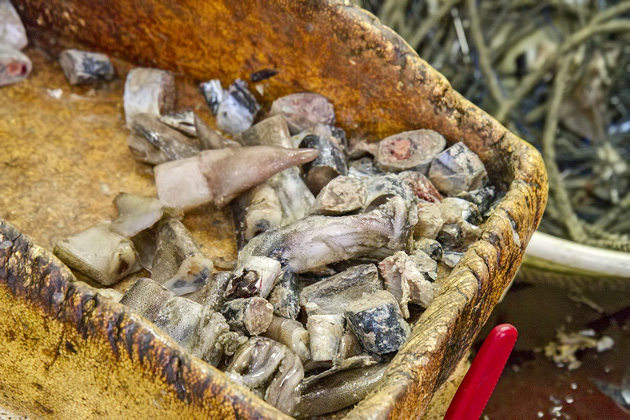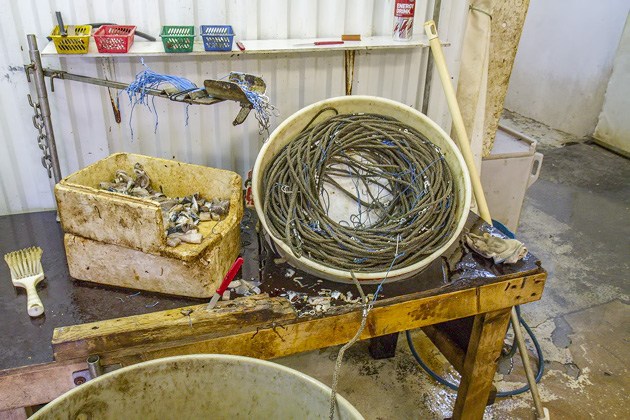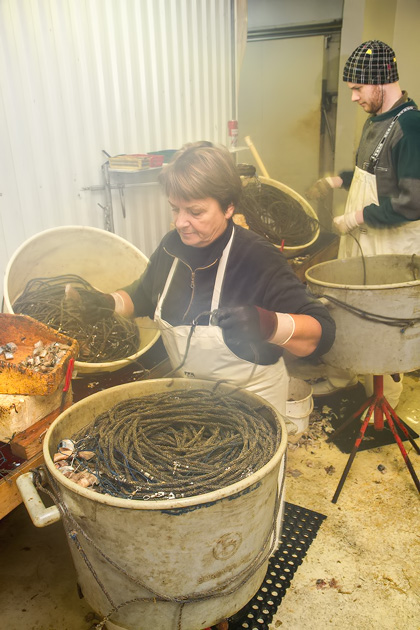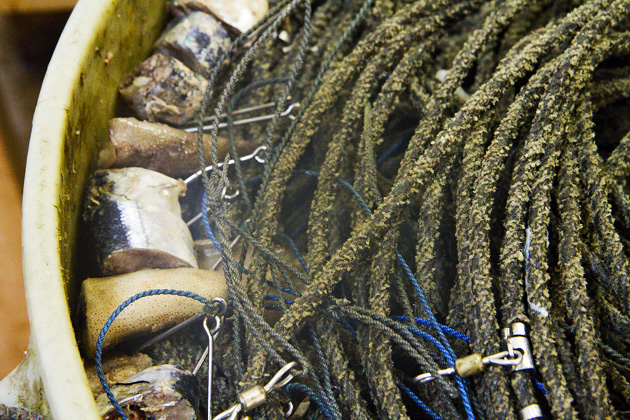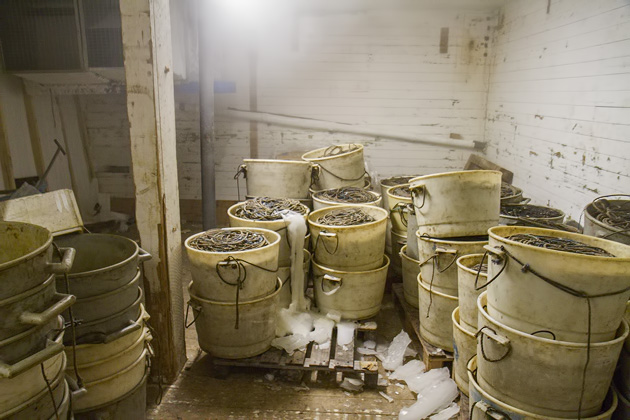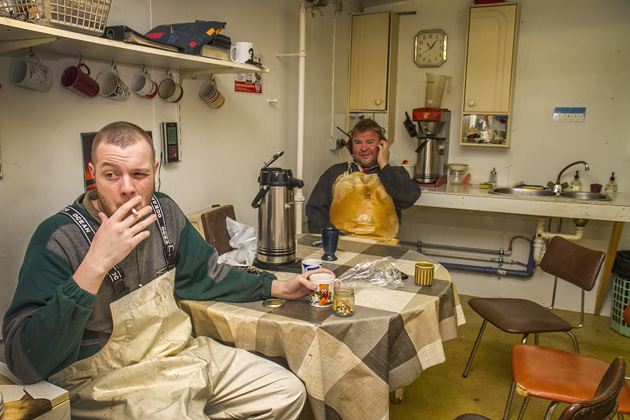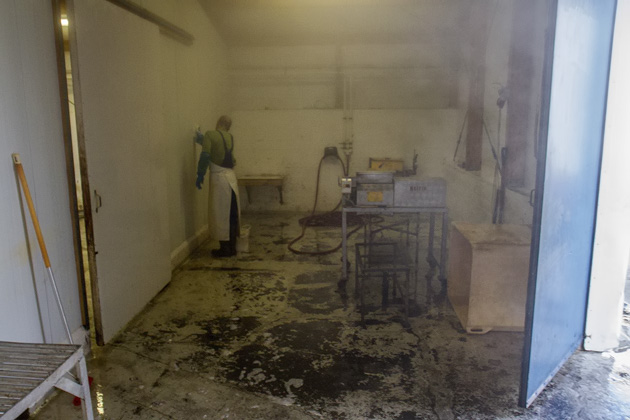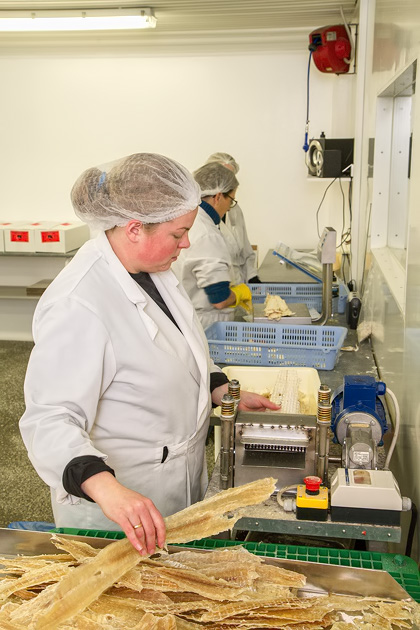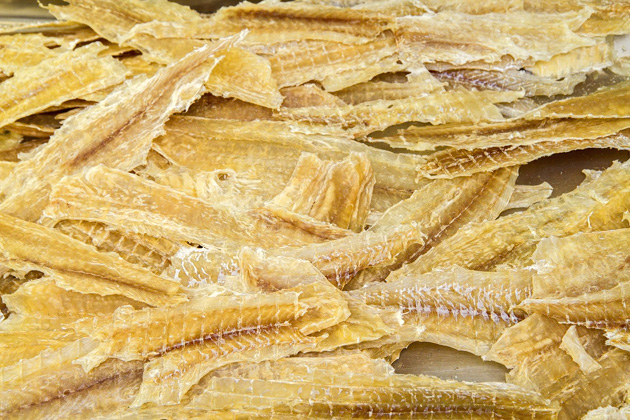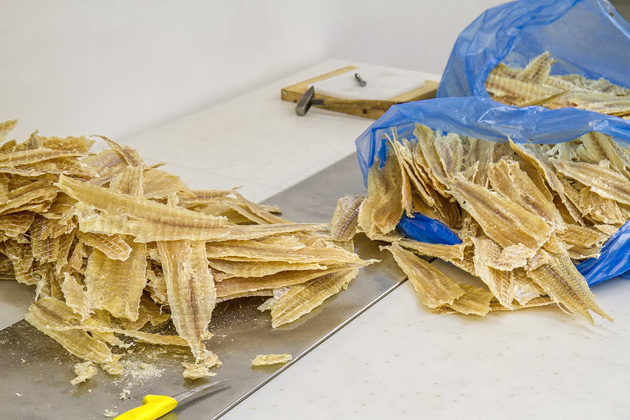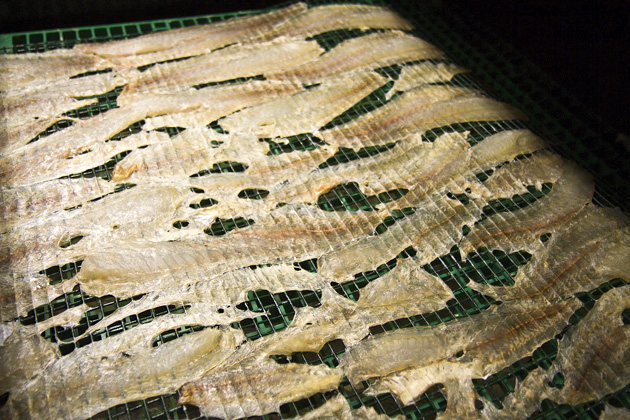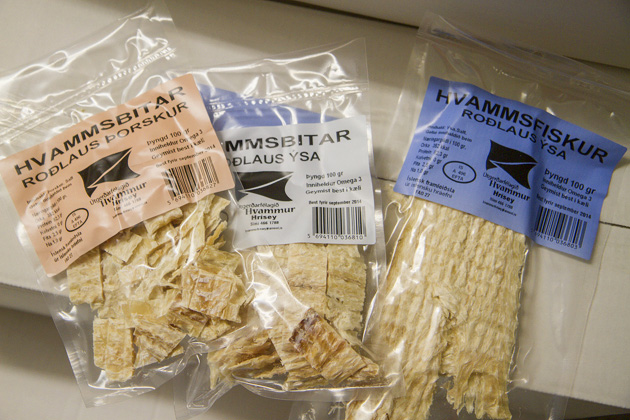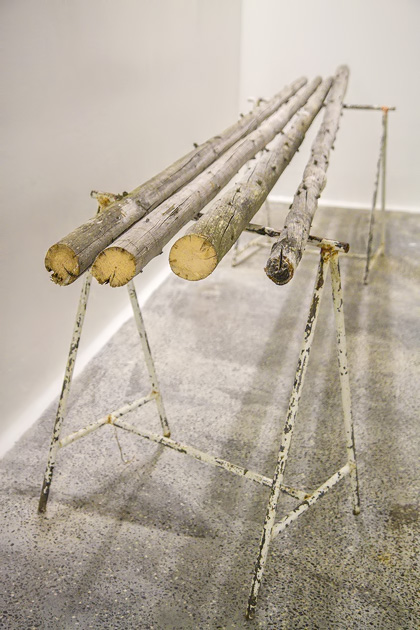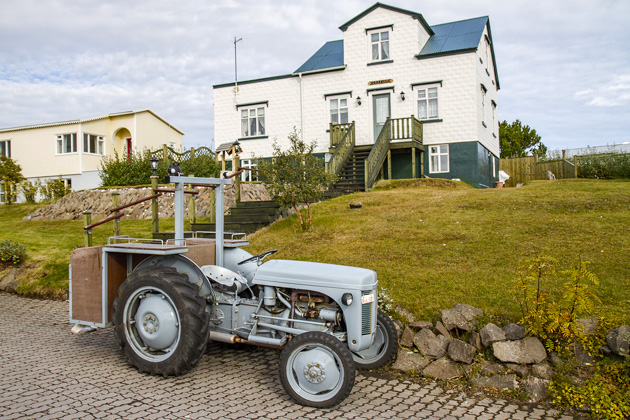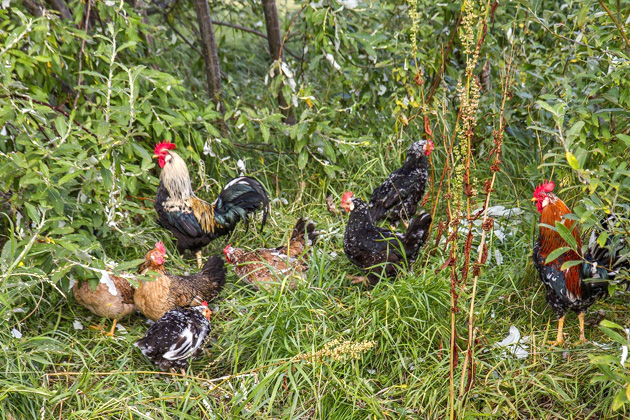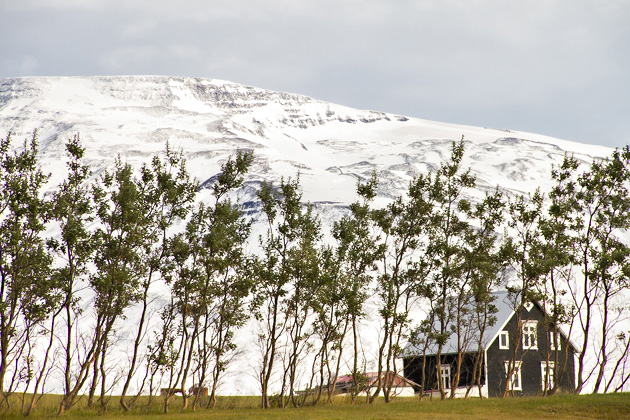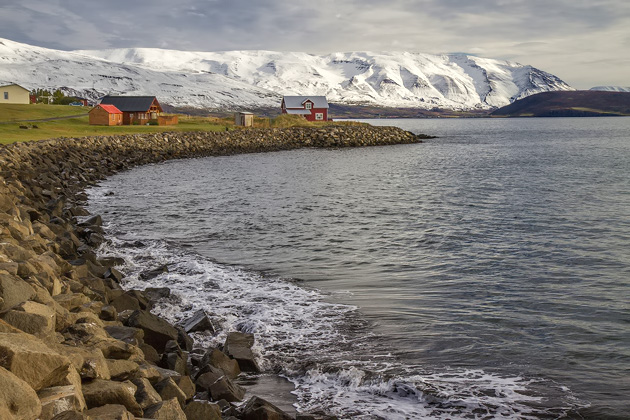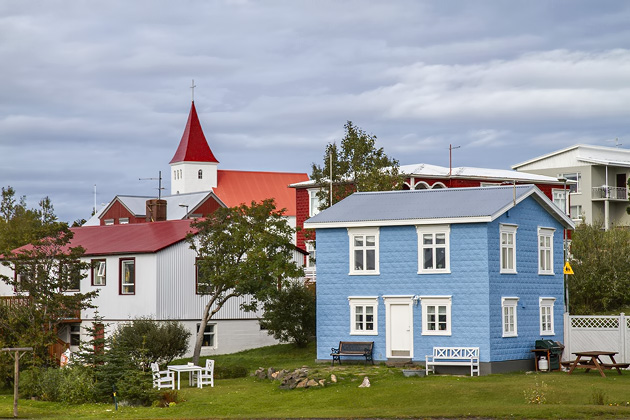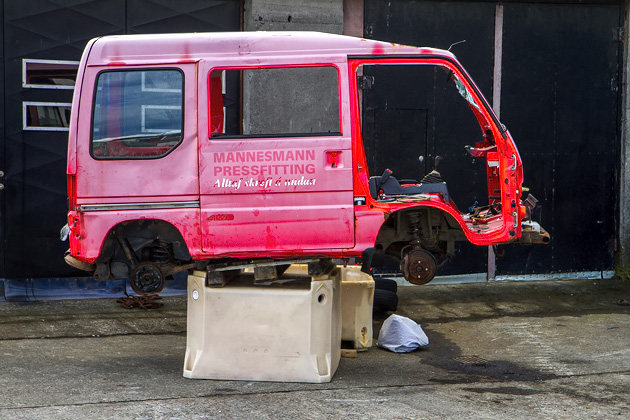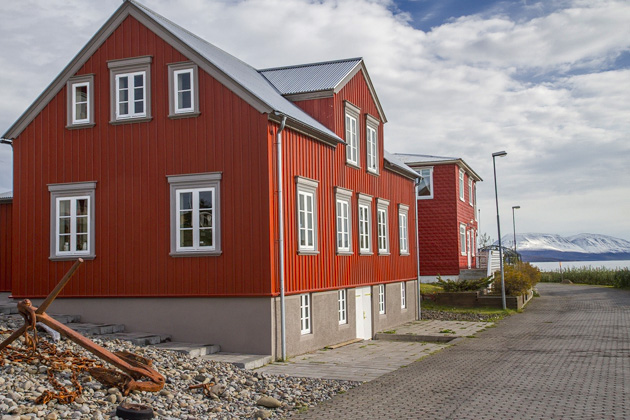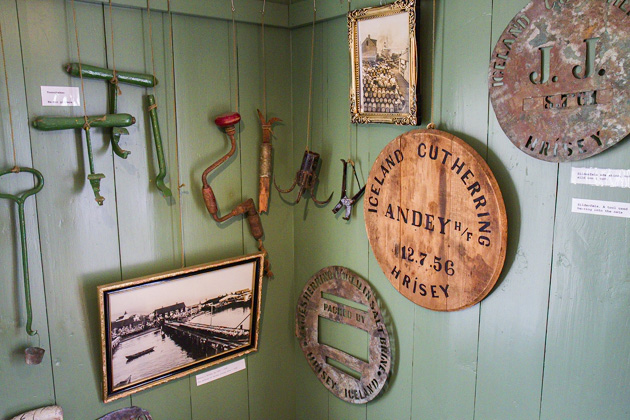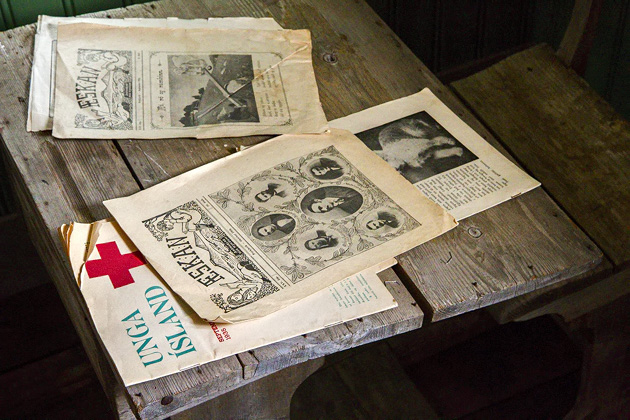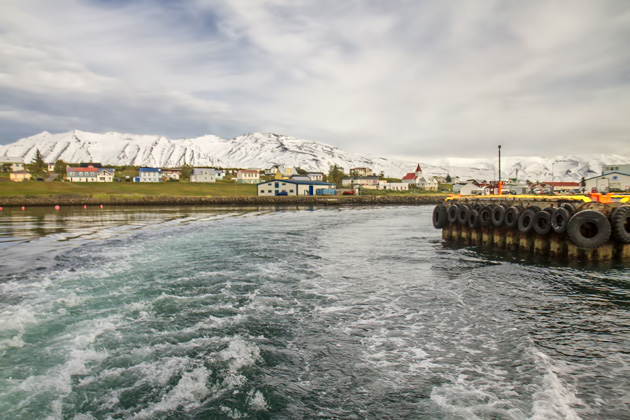Tractors, Ptarmigans and Dried Cod at Hrísey Island
Inclement weather and an irregular winter ferry schedule forced us to cancel our trip to the northern island of Grímsey, the only place in Iceland which crosses the Arctic Circle. But we’d been in this country long enough to have learned: always have a Plan B. And so we hopped on a different ferry bound for a different island: Hrísey.

We weren’t too excited about Hrísey and perhaps even antagonistic toward it. The island sits in the middle of the Eyjafjörður Bay, not far off the coast, and we could see its entire length while driving to the ferry terminal in Árskógssandur. “Flat and boring,” was my estimation. Instead of the three-hour adventure trip across the North Atlantic to arctic Grímsey, our ferry ride would be 30 minutes. And Hrísey’s big attraction? Ptarmigans. Be still my beating heart!
So how did it come to pass that, hours later on the ferry back to the mainland, Jürgen and I were happily anointing this one of the most enjoyable days in recent memory?
Before arriving, we had been in touch with Hrísey’s tourism department (a “department” which I’m pretty sure consists of a single person; Hrísey’s total population is 200). Meeting us at the port was Júlla, who would be taking us on a quick trip around the island. Normally, tours around Hrísey are conducted by tractor, which is the preferred method of doing everything here, from garbage collection to taxiing. But Júlli had a truck, so we hopped in and set off.

Hrísey looks small from the mainland, but is surprisingly big once you’ve arrived. We drove all the way to the northern tip, and climbed up a small lighthouse. Along the way, we spotted some of the island’s famous ptarmigan. For gamebirds, they aren’t all that skittish about humans. Ptarmigans have few natural predators, and although they’d long been a favorite traditional Christmas dish among Icelanders, it’s now illegal to hunt them.
Back in town, Júlla gave us a peek behind the curtains of life in Hrísey. Tourist season ended in August, so the workers inside the fishing stations were probably surprised to see two picture-snapping foreigners. We watched them hook squid chunks onto 50-meter long fishing lines, which were then looped around into buckets. Each line can catch up to 200 cod, and takes hours to bait. All very interesting, but the stink in this room was something I’d never experienced. It smelled like piles of ammonia-soaked, rotted fish that a sick dog had spent days puking and defecating on. Absolutely the foulest olfactory experience of my life, but I was most disturbed by the fact that, within five minutes, I had grown accustomed to it.
From here, we moved onto the dried fish warehouse. Until our day on Hrísey, I had considered dried fish to be a huge practical joke that Iceland was playing on its visitors. “Welcome to Iceland, do please try some dried fish! It’s a real cultural delicacy! We all love it, don’t we guys? [nudge, nudge]” No way that anyone could truly enjoy munching on a substance which might as well be fish-flavored cardboard. But today, I began to open my mind to the possibility. We saw how the fish is dried, softened, cut and packaged, and sampled both dried cod and haddock. It didn’t taste half bad. Really!
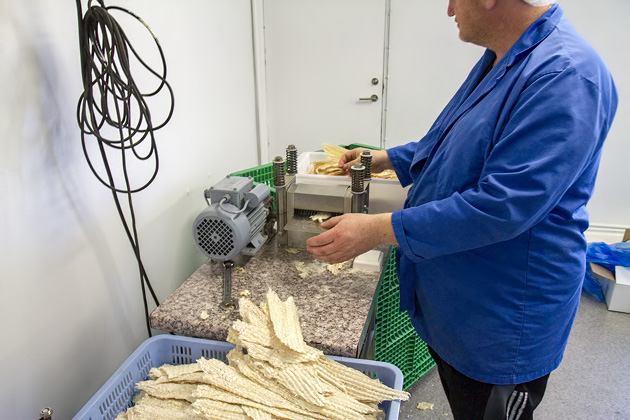
Next, we made our way to the town museum, dedicated to Hrísey’s early days. A curious mix of shark hunting equipment and folksy memorabilia, the museum was interesting enough, but felt a little superfluous. Iceland may have modernized quickly in the past 60 years, but time seems to have stood still on Hrísey. I’d look at the museum’s old photographs of schoolchildren and fishermen, then peek out the window: nope, nothing’s changed. I mean, right there, in the present-day, is a guy driving his kids home from school on a tractor.
We finished the day at Júllibuð, the general store owned and operated by our guide himself. Júlli opens up for an hour around lunchtime and, as we sat down to our sandwiches, many of the locals we’d encountered throughout the day filed in. Hrísey is the kind of place where, if you spent even a week there, you would get to know everyone. It was an excellent day out and, with apologies to Grímsey, we were happy that our plans had changed.
